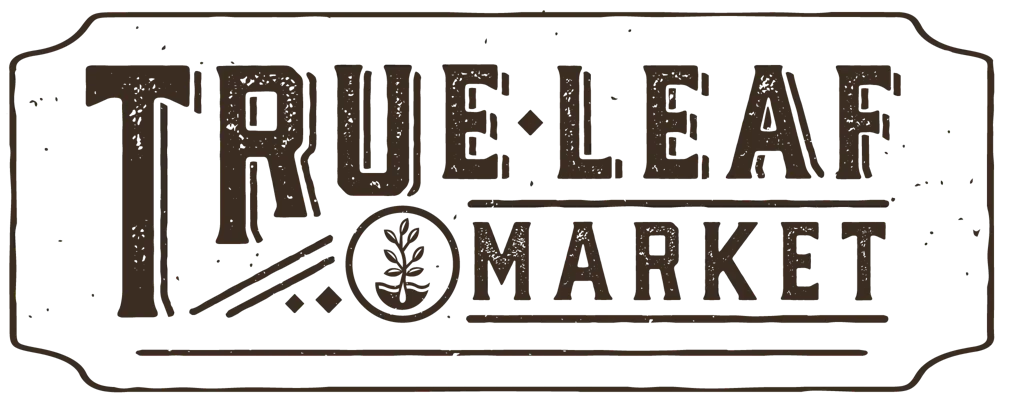Bell Fava Bean Vegetable Garden Seeds - Below Standard - Low Germ
Download Free Vegetable Growing Guide PDF
Germination Details
-
Germination: 58%
-
State (Utah) Requirements: 75%
- Suggested Use/s: Gardening
- Special Directions: This seed is -17% below standard. Increase the number of seeds you plant accordingly to make sure you get the growth you envision.
What is "Below Standard Seed"?
Simply put, it is seed that doesn't meet our state's (Utah) germination standard, a standard that varies slightly from seed to seed. Any seed intended for gardening that has a below standard germination rate cannot be sold alongside those that meet the state requirements (which often reflect the national requirements for germination).
We send samples of all our seed to the Utah Department of Agriculture, where they perform several tests to assess the quality of the seed. These state-wide and national seed standards are in line with Association of Official Seed Analysts (AOSA), which exist to ensure consumers that they are getting the highest quality seed, as advertised. Since this seed doesn't meet the state standard, we mark it as "Below Standard Seed".
Low germination seeds are non-refundable.
Click here to view regularly priced, high germination seed.
Growing Bell Fava Beans in the Vegetable Garden
Bell Fava Beans are cool-season crops. They should be planted as soon as the soil can be worked in early spring, or in mild winter climates, they can be sown in fall for a spring harvest. It's best to directly sow fava beans because they don't transplant well. They thrive in temperatures between 60 F to 65 F. Plant seeds 3 inches deep, 4-6 inches apart, in rows 18-24 inches apart.
Maintain consistent moisture in the soil, especially during flowering and pod development. Avoid waterlogging, which can lead to root rot. Mulching around the base of the plants can help retain soil moisture and regulate temperature. Fertilization is not necessary if planted in rich, loamy soil. They benefit from a legume-specific inoculant at planting, which enhances nitrogen fixation.
Harvesting Bell Fava Beans
Fava beans can take anywhere from 90-200 days to be ready for harvest, depending on what effect you are looking for. Pods should be full and firm, with a slight sheen. The best time to harvest is when the beans inside the pods are about the size of a small marble and are still tender. Fava beans are typically grown as a shelling variety, meaning they are harvested for the beans inside the pod rather than eating the entire pod. Use scissors or pruners to cut pods from the plant. After harvesting, the beans can be shelled by opening the pods and removing the seeds.
About Bell Fava Bean Garden Seeds
Fava beans are native to the Mediterranean region. It thrives in similar climates. It is widely cultivated throughout the world for agricultural and culinary applications.
As a legume, Bell Fava Beans contribute to soil health by fixing atmospheric nitrogen, reducing the need for synthetic fertilizers, and benefiting subsequent crops.
Frequently sown with vetch and other cover crops, which can use bell beans as a scaffold, or with grasses and other legumes for forage. Sow at a rate of 80-125 pounds per acre. Peak bloom 42-63 days after sowing, matures in 90-220 days.
This cool season annual is typically planted in October (northern US states) up to mid-November in California and incorporated into the soil in spring when 10% of the blooms are open. Bell beans can overwinter in zones 8 and warmer. It may also be sown in early spring.
Bell bean (Vicia faba) is the same species as fava bean, but it is cold tolerant and produces more biomass and smaller seeds.
Bell Fava Beans are hardy and a perfect choice for a cover crop in cooler climates. They tolerate frost and snow, are a nutritious grazing food for cattle, and add nitrogen into the soil for future higher yields.
Stories/Tips From Our Gardeners
”Bell beans have classic sweet-pea-esque flowers with a lightly sweet scent. I love watching pollinators have a hay day with them!"
 |
- Lara Wadsworth, True Leaf Market Writer |
Other Resources
Bell Fava Bean Seeds Per Package:
- 5 lb - Bulk Seeds - Approximately 7,000 Seeds
- 25 lb - Bulk Seeds - Approximately 35,000 Seeds
Non-GMO Bell Fava Bean seeds are available for Fast Free Shipping on qualifying orders.
=======
ATTRIBUTES
Basic Info
| Latin Name: |
Vicia faba
|
| Bean Sub-Type: |
Fava - Fava beans (also called broad beans) look like large lima beans they are less starchy than lima beans and have a slightly sweet, mild nutty flavor and a creamy texture. |
| Bell Fava Bean Color: |
Green |
| Bell Fava Bean Flavor: |
Creamy, nutty, and buttery. |
Growing Info
| Hardiness Zone: |
3, 4, 5, 6, 7, 8, 9 Annual Crop: Not Intended to Overwinter |
| Days to Maturity: |
90-200 |
| Days to Germination: |
5-10 |
| Seeding Depth: |
1 inch |
| Plant Spacing: |
4-6 inches |
| Row Spacing: |
18-24 inches |
| Plant Height: |
36-48 inches |
| Growth Habit: |
Upright |
| Soil Preference: |
Beans prefer well-draining, nutrient-rich, loamy soil with a pH of 6.0-6.8. As light feeders and nitrogen-fixing legumes, beans do not require nitrogen-heavy fertilizers. |
| Temperature Preference: |
Warmer (70-85 F). |
| Light Preference: |
Full Sun |
Other
| Direct Sow: |
Yes, direct sow when soil temperatures are reliably above 60 F. Planting with an inoculant may increase yields, but is certainly not required for a successful grow. |
| Start Indoors: |
Not Recommended. Beans grow best without any root disturbance. We recommend direct sowing instead of transplanting. |
| Bean Pollination: |
Beans are self-pollinating as they contain both the male and female parts within their flowers, unlike other fruit and vegetable plants. While they are self-pollinating, having a variety of pollinators and flowers around will improve yields by ensuring the greatest chances for pollinating events to occur. |
| Snap or Shell Bean: |
Shell - Shell beans have a non-edible woody or fibrous husk that contains the edible beans within. For example, edamame has the beans inside, but you wouldn't want to eat the husk. Shell beans are also sometimes referred to as shelling beans. |
| Pole or Bush Bean: |
Bush - Bush beans grow on low-growing, compact, upright, bushy plants that typically do not need a trellis, pole, or other support. Bush beans are usually favorable to container growing. |
| Plant Width: |
12-18 inches |
| Growth Speed: |
Late - Ready for harvest around 86 days or more. |
| Deer Resistant: |
No |
| Germination Temperature: |
70-90 F |
| Pests and Diseases: |
Beans are susceptible to beetles, aphids, spider mites, and cutworms. Look for signs of chewing, curling leaves, eggs on the undersides of leaves, and leaf discoloration. Keeping your bean plants clean from dust build-up and surrounded by a variety of plants to help deter and prevent pest damage. Beans are also susceptible to powdery mildew, bean blight, rust, and root rot. Maintain a regular watering schedule that avoids overly saturated soil. The roots need adequate time to air out between watering. This will also help prevent common fungal and bacterial diseases from developing. Good air circulation and applying water to the ground rather than the leaves will help maintain healthy bean plant growth. |
| Garden Size: |
Greenhouse, Garden Plot, Raised Bed, Container |
| Bean Use: |
Fresh, dried, canned, salads, soups, stews, mashed. |
| Climate Tolerance: |
Heat |


















